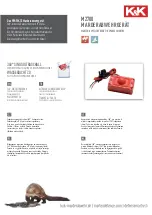
A.
Introduction
Thank you for purchasing DIG’s LEIT-2ET two station, weather based, ambient
light (solar) powered, wireless irrigation controller, which operates as part of
the LEIT-2ET wireless irrigation system. This manual describes how to get the
LEIT-2ET controller up and running. After reading the manual and becoming
familiar with the basic functions of the controller, the user can refer to the
manual for less common tasks in the future.
B.
About the LEIT-2ET System
The LEIT-2ET weather based wireless irrigation control system comprises the
LEIT-2ET weather based two-station ambient light (solar) powered irrigation
controller with a rain sensor connection, the LEIT RC2ET handset, and the LEIT
WWS or LEIT WWSE ambient light (solar) powered weather station.
Introduction
The LEIT-2ET, a two station ambient light (solar) powered wireless irrigation
controller, is an advanced and cost effective weather based wireless device
that is programmed using the LEIT RC2ET remote control handset. Site
information entered into the LEIT RC2ET remote control handset is downloaded
into the LEIT-2ET controller, and with hourly weather data received from
the LEIT WWS or LEIT WWSE wireless solar powered weather station, the
LEIT-2ET controller calculates the daily local microclimate evapotranspiration
(ET). The final result is used for a daily adjustment or override of the current
scheduled irrigation program.
The LEIT-2ET includes a photovoltaic module (PVM panel), 2 pairs of 18” (45
cm) station wires (labeled #V1 and #V2) used to connect the controller with up
to two S-305DC solenoids, plus a pair of yellow wires for sensor connection.
The LEIT-2ET has an ultra-compact photovoltaic module that harnesses light
energy to generate electricity that is stored and used to power the controller
day and night in any kind of weather. The programming and operation of
the LEIT-2ET controller is conducted using the LEIT RC2ET remote control
handset, which has an operating range of up to 350 ft (100 m) line of sight, by
way of 2-way radio communication. After installation, no further visits to the
controller are required.
3




































